
SEAT Leon ST (2014-2020) engines, drive and performance
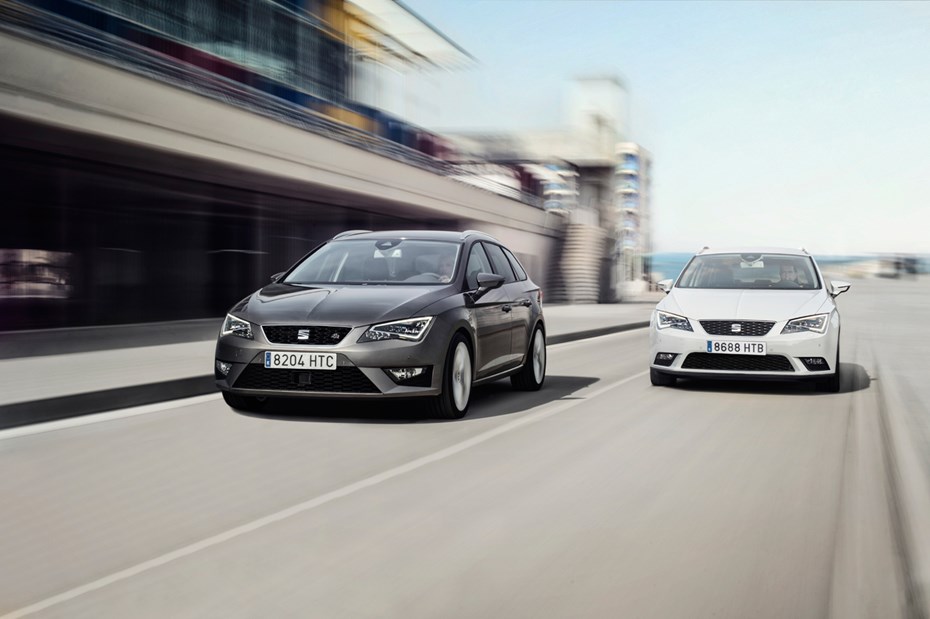
- Wide range of petrol and diesel engines available
- Strong performance from even the smaller motors
- 300hp Cupra version is seriously quick
Petrol engines
There’s a multitude of different petrol engines available in the Leon ST, with some giving customers the option of a seven-speed DSG automatic gearbox.
READ: Manual vs auto? We test the Leon’s gearboxes back-to-back
The smallest engine in the range is a 115hp 1.0-litre three-cylinder unit, producing 200Nm of torque and capable of accelerating from 0-62mph in 9.8 seconds (10.2 for the DSG automatic) and on to a top speed of 126mph.
Next up is the 1.2-litre engine, and, although it might have a larger displacement than the 1.0-litre motor it boasts 5hp less, coming in at 110hp. Torque is inferior too at 175Nm, while 0-62mph takes 10.1 seconds and top speed is 121mph.
Upgrade further and there’s a 1.4-litre turbocharged engine on offer in two different power outputs, 125hp and 150hp. The latter, boasting 250Nm and capable of accelerating from 0-62mph in 8.2 seconds, will provide enough punch for the majority of drivers while still returning good fuel economy.
Refinement levels are strong when cruising, yet the engine does sound a little harsh when revved hard.
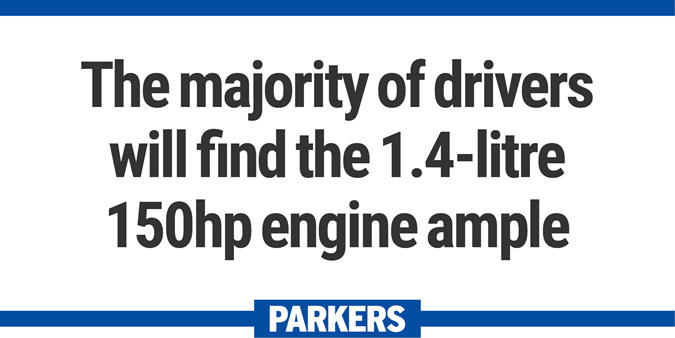
As for the 125hp version, torque is rated at 200Nm, while 0-62mph is done-and-dusted in 9.4 seconds. Top speed is 126mph – 8mph less than the 150hp engine manages.
Move into the upper echelons of the petrol engine range and you’re presented with a 1.8-litre turbocharged motor, putting out 180hp and 250Nm of torque – the latter being identical to what’s on offer in the smaller 150hp 1.4-litre powerplant. Acceleration is slightly punchier at 7.8 seconds to 62mph (7.7 for the DSG auto version) while top speed is 140mph (139mpg for the DSG auto).
Diesel engines
Thankfully, the range of diesel engines available in the Leon ST is a little less complicated with only the two displacements on offer – 1.6- and 2.0-litre. As with the petrol engines, a seven-speed DSG automatic transmission option is available on selected diesel models.
Opt for the base 115hp 1.6-litre turbodiesel engine and 0-62mph is taken care of in 9.9 seconds with top speed rated at 122mph. Torque is a claimed 250Nm.
If you’re after a little more power, either of the 2.0-litre turbodiesel motors should do the trick, available in 150hp and 184hp form. The former boasts 340Nm of torque and a respectable 0-62mph time of 8.6 seconds, maxing out at 134mph. It’s a strong and punchy engine which is refined when cruising, yet can be a little noisy when pulling away or under heavy acceleration.
Plump for the more powerful 184hp version and torque increases to 380Nm, while 0-62mph drops to 7.8 seconds. Top speed is rated at 142mph (140mph for the DSG auto). Despite the difference on paper however, we see little benefit of picking the 184hp version over the 150hp engine. The former doesn’t feel that much quicker and is noticeably rougher in some scenarios.
That said, customers who plan to frequently use the car for towing may see the benefit of an extra 40Nm of torque. Also, note that the 184hp engine is available with the DSG automatic gearbox, unlike the 150hp version.
Driving modes
The SEAT has four driving modes to match the type of driving you’re doing. You can select from Eco, Normal, Sport and Individual, each altering the engine and steering response, plus interior ambient lighting.
You can tailor elements of the above by using the Individual mode, which allows you to mix and match the best settings to come up with your favourite combination.
CUPRA performance version
If you like your estate cars served up with a scarcely-believable turn of speed then the 300hp 2.0-litre CUPRA version is the one to go for.
We ran one for four months – see how we got on with it here, and how it compares to its rival the Golf R.
Producing 380Nm of torque and capable of 0-62mph in as little as 4.9 seconds in the all-wheel drive DSG automatic version (6.0 seconds in front-wheel drive manual form), the CUPRA is a real wolf-in-sheep’s-clothing car. Top speed, meanwhile is 155mph.
The Leon ST Cupra only comes in one trim level and with one engine, but you still have to make the decision between a manual front-wheel drive version and an automatic all-wheel drive version.
We’ve tested them back-to-back to help you make your mind up.
While there is a school of thought which suggests the former is more fun, the outright capability of the latter is hard to ignore.
Also, the six-speed manual gearbox doesn’t gel particularly well with the CUPRA version, plus the car can sometimes struggle to put its power down through the front wheels alone.
Gearbox assessment
The standard six-speed manual gearbox is accurate and pleasant-enough to use, although can be a bit notchy between ratios. The seven-speed DSG meanwhile, is slick and smooth with manual override paddles to shift gear manually.
Opt for the auto CUPRA model, and the six-speed DSG is equally accomplished, although could do with another ratio for cruising.
- Confident and stable through the corners
- All-round ride comfort is good, though just beware of the effect of larger wheels
- Cupra models benefit from standard-fit Dynamic Chassis Control (DCC)

The Leon ST car handles well through corners and produces a comfortable ride. While it may not be the most exciting thing in the world, it is still engaging enough to satisfy most and handles well in both city and motorway environments.
The car makes little fuss of most potholes and bumps in the road, although larger wheels will give the usual unpleasant edge to the ride comfort. Get the Leon ST on a twisty country road and it feels quite nimble and keen to change direction thanks to its lightweight chassis and sharp steering.

Available in FR variants, the Seat Drive Profile enables the driver to vary the characteristics of the power steering, throttle control and DSG transmission in three modes – eco, comfort and sport – depending on the type of driving they’re doing. There’s also an additional individual setting which allows the driver to set up a custom mode.
Dynamic Chassis Control (DCC) is fitted as standard to Cupra models and varies the firmness of the suspension according to the driver’s preference.
We took our Leon ST Cupra on the track at Rockingham – see how it fared here.


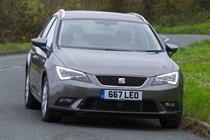
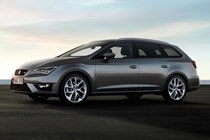
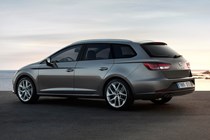

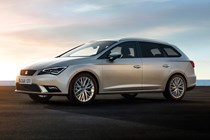
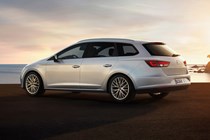
.jpg)
.jpg)
.jpg)
.jpg)
.jpg)
.jpg)
.jpg)
.jpg)
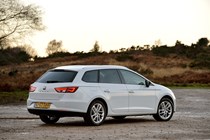
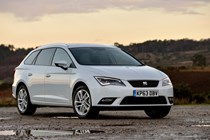
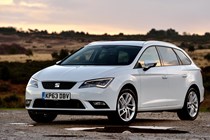
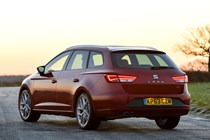
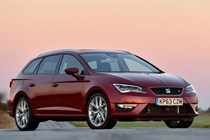


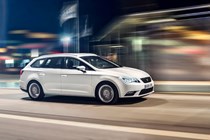
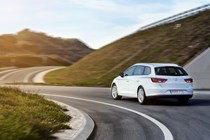

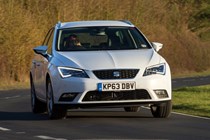
.jpg)
.jpg)
.jpg)
.jpg)
.jpg)
.jpg)
.jpg)
.jpg)
.jpg)
.jpg)
.jpg)
.jpg)
.jpg)
.jpg)

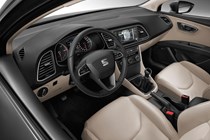
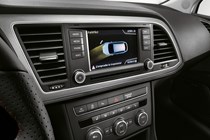
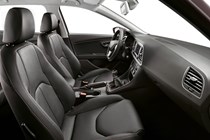
.jpg)
.jpg)
.jpg)
.jpg)
.jpg)
.jpg)
.jpg)
.jpg)
.jpg)
.jpg)
.jpg)
.jpg)
.jpg)
.jpg)
.jpg)
.jpg)
.jpg)
.jpg)
.jpg)
.jpg)
.jpg)
.jpg)
.jpg)
.jpg)
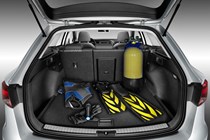
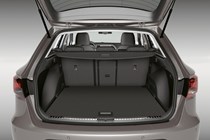
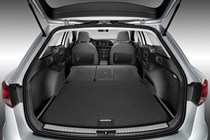
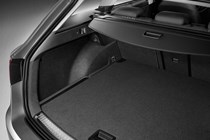
.jpg)
.jpg)
.jpg)
.jpg)
.jpg)
.jpg)
.jpg)
.jpg)







.jpg?quality=50)
.jpg?quality=50)
.jpg?quality=50)
.jpg?quality=50)
.jpg?quality=50)
.jpg?quality=50)
.jpg?quality=50)
.jpg?quality=50)











.jpg?quality=50)
.jpg?quality=50)
.jpg?quality=50)
.jpg?quality=50)
.jpg?quality=50)
.jpg?quality=50)
.jpg?quality=50)
.jpg?quality=50)
.jpg?quality=50)
.jpg?quality=50)
.jpg?quality=50)
.jpg?quality=50)
.jpg?quality=50)
.jpg?quality=50)




.jpg?quality=50)
.jpg?quality=50)
.jpg?quality=50)
.jpg?quality=50)
.jpg?quality=50)
.jpg?quality=50)
.jpg?quality=50)
.jpg?quality=50)
.jpg?quality=50)
.jpg?quality=50)
.jpg?quality=50)
.jpg?quality=50)
.jpg?quality=50)
.jpg?quality=50)
.jpg?quality=50)
.jpg?quality=50)
.jpg?quality=50)
.jpg?quality=50)
.jpg?quality=50)
.jpg?quality=50)
.jpg?quality=50)
.jpg?quality=50)
.jpg?quality=50)
.jpg?quality=50)




.jpg?quality=50)
.jpg?quality=50)
.jpg?quality=50)
.jpg?quality=50)
.jpg?quality=50)
.jpg?quality=50)
.jpg?quality=50)
.jpg?quality=50)